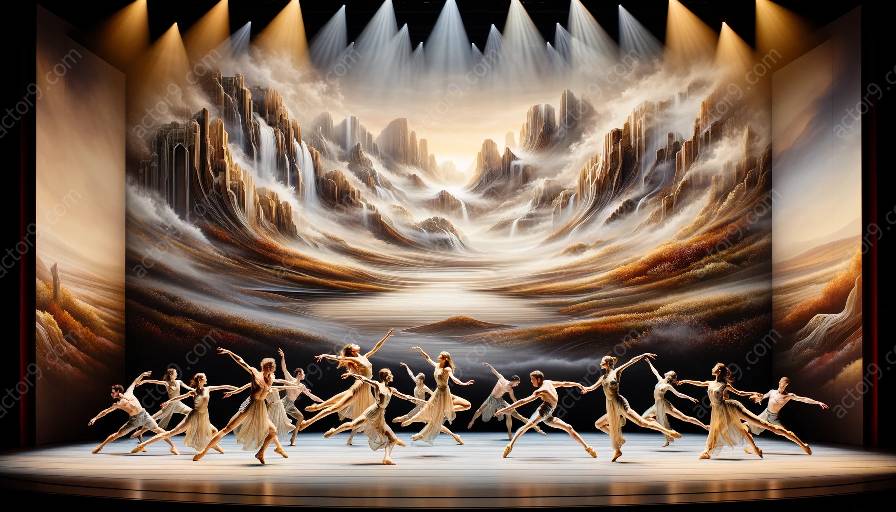Physical theatre choreography is an interdisciplinary art form that encompasses a wide range of techniques and methods to convey emotion, storytelling, and meaning through movement. In this topic cluster, we will delve into the captivating world of physical theatre choreography, exploring its dynamic techniques and methods that bring narratives to life on stage.
The Essence of Physical Theatre
Physical theatre is a form of performance that emphasizes the use of the body as a primary means of expression. It blends elements of dance, gesture, and movement with storytelling, often transcending language barriers to communicate universal themes and emotions.
Emotional Expression through Movement
In physical theatre choreography, performers use their bodies to convey a wide range of emotions, from joy and love to fear and despair. Through techniques such as gesture, facial expression, and spatial manipulation, choreographers create nuanced movements that evoke powerful emotional responses from the audience.
Exploring Contact Improvisation
Contact improvisation is a core technique in physical theatre choreography that involves the spontaneous and collaborative movement between performers. This method fosters a deep sense of connection and trust among the dancers, allowing for intricate and fluid movements that underscore the collaborative nature of physical theatre.
Techniques for Spatial Manipulation
Physical theatre choreography often explores the manipulation of space through movement. Performers utilize techniques such as levels, pathways, and groupings to create visually striking compositions that enhance the storytelling and thematic elements of the performance. By skillfully manipulating space, choreographers draw the audience into the captivating world of the narrative.
Rhythm and Tempo as Narrative Devices
Rhythm and tempo are essential elements in physical theatre choreography, serving as powerful narrative devices that guide the emotional arc of a performance. Choreographers carefully orchestrate movement sequences to synchronize with music, creating dynamic and compelling rhythms that heighten the emotional impact of the narrative.
Exploring Viewpoints in Choreography
Viewpoints, a technique developed by Anne Bogart and Tina Landau, offers a unique approach to physical theatre choreography by considering the spatial, temporal, and kinesthetic elements of performance. By leveraging viewpoints, choreographers can create visually rich and dynamic compositions that engage the audience on multiple sensory levels.
Integration of Theatrical Elements
Physical theatre choreography integrates a variety of theatrical elements, such as lighting, sound, and set design, to enhance the overall storytelling and emotional resonance of a performance. Through the seamless integration of these elements, choreographers craft immersive and compelling experiences for the audience, elevating the impact of physical theatre as a storytelling medium.
Utilizing Symbolism and Metaphor
Symbolism and metaphor play a significant role in physical theatre choreography, offering choreographers a rich palette of expressive tools to convey complex narratives and themes. By utilizing movement to embody symbolic gestures and metaphoric representations, choreographers infuse performances with layers of meaning and depth that resonate with audiences on a profound level.
Exploring the Art of Adaptation
Adaptation is a fundamental skill in physical theatre choreography, allowing creators to reinterpret and reimagine established narratives and themes through movement. Choreographers draw inspiration from diverse sources, adapting stories, literature, and historical events into compelling physical narratives that captivate and challenge audiences' perspectives.
Conclusion
Physical theatre choreography is a captivating art form that thrives on the innovative use of movement, space, and storytelling to engage audiences in powerful and emotional experiences. By exploring the diverse techniques and methods within physical theatre choreography, creators can continue to push the boundaries of this dynamic and expressive medium, delivering evocative narratives that resonate with audiences far and wide.




































